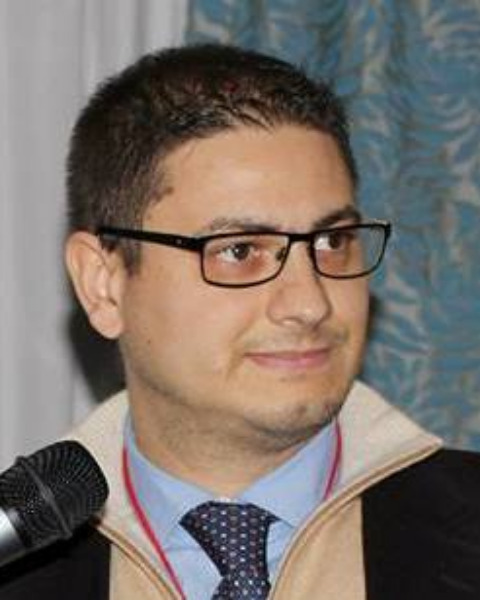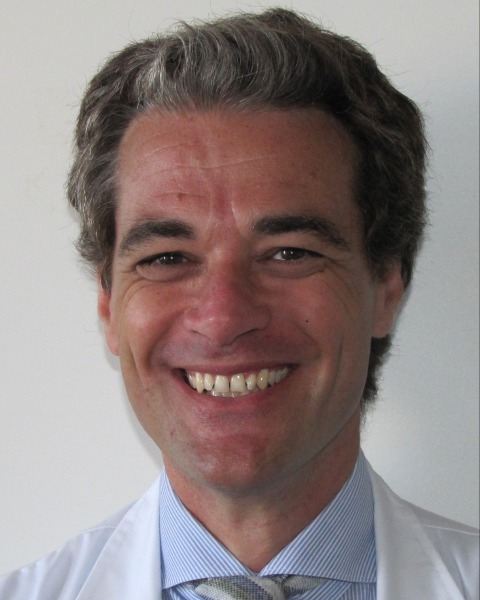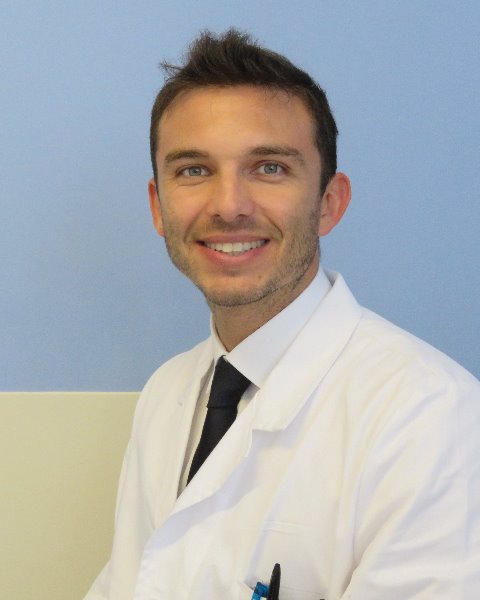Sarcoma
non-CME
P64: Surgical management of the duodenum during multivisceral resection for retroperitoneal sarcoma (RPS)

Alessandra Borghi, MD (she/her/hers)
Senior Resident, General Surgery
Fondazione IRCCS Istituto Nazionale dei Tumori, Milan, United StatesDisclosure information not submitted.

Alessandra Borghi, MD (she/her/hers)
Senior Resident, General Surgery
Fondazione IRCCS Istituto Nazionale dei Tumori, Milan, United StatesDisclosure information not submitted.
- SP
Sandro Pasquali, PhD
Surgical Oncologist
Fondazione IRCCS Istituto Nazionale dei Tumori, Milan, United StatesDisclosure information not submitted.
- SI
Sara Iadecola, MSc
Department of Applied Research and Technological Development
Fondazione IRCCS Istituto Nazionale dei Tumori, United StatesDisclosure information not submitted.
- CM
Carlo Morosi, MD
Radiology attending
Fondazione IRCCS Istituto Nazionale dei Tumori, Milan, United StatesDisclosure information not submitted.
- MB
Marta Barisella, MD
Pathologist
Fondazione IRCCS Istituto Nazionale dei Tumori, Milan, United StatesDisclosure information not submitted.
- CS
Claudia Sangalli, MD
Radiotherapy attending
Fondazione IRCCS Istituto Nazionale dei Tumori, Milan, United StatesDisclosure information not submitted.
- SS
Silvia Stacchiotti, MD
Medical Oncologist
Fondazione IRCCS Istituto Nazionale dei Tumori, United StatesDisclosure information not submitted.
- RS
Roberta Sanfilippo, MD
Medical Oncologist
Fondazione IRCCS Istituto Nazionale Tumori, United StatesDisclosure information not submitted.

Marco Fiore, MD
Surgical Oncologist
Fondazione IRCCS Istituto Nazionale dei Tumori
Milan, ItalyDisclosure information not submitted.
- CC
Chiara Colombo, MD
Surgical Oncologist
Fondazione IRCCS Istituto Nazionale Tumori, United StatesDisclosure information not submitted.
- SR
Stefano Radaelli, MD
Surgical Oncologist
Fondazione IRCCS Istituto Nazionale Tumori, United StatesDisclosure information not submitted.
- RM
Rosalba Miceli, PhD
Department of Applied Research and Technological Development
Fondazione IRCCS Istituto Nazionale Tumori, United StatesDisclosure information not submitted.

Alessandro Gronchi, MD, FSSO
Chair Sarcoma Service - Head of the Department of Surgery
Fondazione IRCCS Istituto Nazionale dei Tumori
Milano, ItalyDisclosure(s): Bayer HealthCare Pharmaceuticals Inc.: Advisor (Ongoing); Deciphera: Speaker (Ongoing); Eli Lilly & Company: Advisor (Terminated, January 1, 2020); Nanobiotix: Research Grant (Terminated, December 31, 2021); Novartis: Advisor (Terminated, November 5, 2022); pfizer: Advisor (Terminated, November 5, 2022); PharmaMar: Advisor (Ongoing), Research Grant (Ongoing); SpringWorks: Advisor (Ongoing)

Dario Callegaro, MD (he/him/his)
Surgical Oncologist
Fondazione IRCCS Istituto Nazionale dei Tumori, Milan, United StatesDisclosure information not submitted.
Poster Presenter(s)
Author(s)
Duodenal dissection is a key step of multivisceral resection for RPS. This study investigates the effect of duodenal dissection vs resection on postoperative morbidity and oncological outcomes.
Methods:
All consecutive adult patients with primary localized RPS treated with surgery (2010-2020) at a single high-volume center were included. Patients were stratified by duodenal management in group 1 (duodenal dissection: easy vs tough (stitches/sutures) based upon operative report) and group 2 (duodenal resection: wedge vs segmental vs Whipple). Sarculator was used to calculate the nomogram score. Univariate and multivariate logistic regression analyses were performed to investigate the association between duodenal resection and severe adverse events (Clavien-Dindo >=3), overall survival (OS) and crude cumulative incidence of LR/DM (CCI of LR/DM).
Results:
The study included 461 patients (Table 1). Duodenal resection was performed in 13.9 % of right RPS and 7.2% of left RPS. Severe 90-day postoperative adverse events occurred in 26.5% (group 1) and 26.0% (group 2) of patients (p 0.30).
After a median FU of 61 months (IQR 54-66) 5-year OS was 0.74 (95% CI 0.69-0.79) in group 1 and 0.62 (95% CI 0.44-0.75) in group 2 (p 0.03). At multivariable analysis, after adjusting for the Sarculator score, OS did not differ significantly in the two groups (HR=1.37, 95% CI 0.85-2.22; p 0.20). Five-year CCI of LR was 0.19 (95% CI 0.15-0.24) in group 1 and 0.50 (95% CI 0.33-0.65) in group 2 (HR=2.42, 95% CI 1.53-3.84, p< 0.01). This difference held when adjusted for the Sarculator score (HR=2.28, 95% CI 1.41-3.69, p 0.01). In group 1, 5-yr CCI of LR was 0.18 (95% CI 0.14-0.23) in the ‘easy dissection’ subgroup and 0.40 (95% CI 0.20-0.60) in the ‘tough dissection’ subgroup (HR=1.94, 95% CI 1.11-3.37, p 0.02). In all, 135 patients had LR. Among them, LR occurred only in close proximity to duodenum in 5 patients: 2 easy dissection, 1 tough dissection, 1 wedge resection and 1 segmental resection. Five-year CCI of DM was 0.22 (95% CI 0.18-0.27) in group 1 and 0.24 (95% CI 0.12-0.37) in group 2 (p 0.69).
Conclusions:
Duodenal resection was not associated with higher surgical morbidity or worse OS after adjusting for the nomogram score. When the dissection of the duodenum is easy, the margin is safe and the risk of recurrence at the duodenum is minimal. Both duodenal resection and tough dissection were associated with a higher incidence of LR (only rarely located close to the duodenum) with no difference in DM. This likely reflects the higher tendency to recur locally of those tumors invading or abutting adjacent organs, such as the duodenum.
Learning Objectives:
- describe surgical management of the duodenum during retroperitoneal sarcoma surgery
- describe the impact of duodenal resection on severe postoperative adverse events
- discuss the prognostic implications of different types of duodenal dissection/resection
